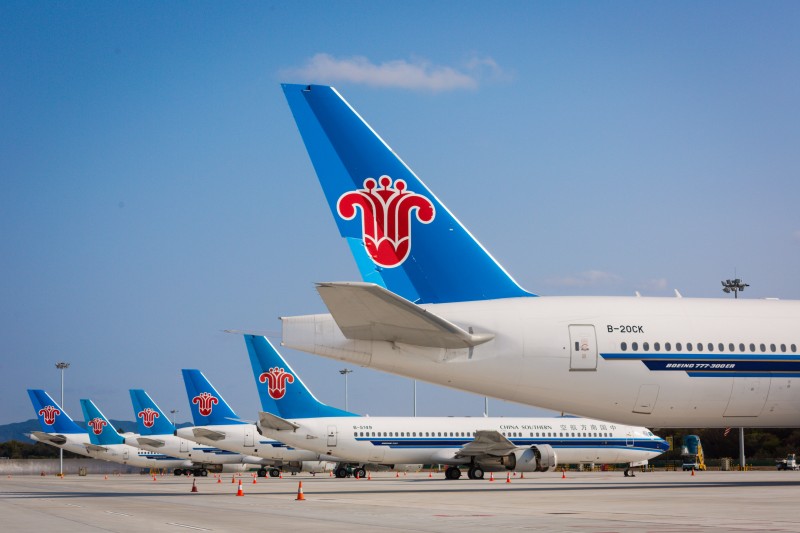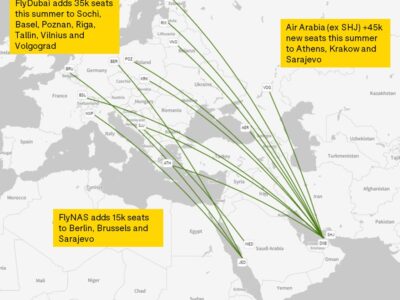
2022 has been another year of ups and downs for Chinese aviation (Photo : China Southern Airlines)
Global aviation industry analyst firm OAG says the year 2022 has been another year of ups and downs for Chinese aviation, at least in terms of how much flying has been done. No other market, perhaps in history, has seen the same degree of volatility in the schedules being operated by airlines, says OAG.December 2022 saw a jump of 35 pc in capacity compared to November, which was a fall of 32 pc as compared to October. OAG says that overall China has seen capacity deteriorate in 2022 compared to 2021, an unusual situation when aviation in most countries continues to be recovering from the pandemic. OAG says that China will end the year with December 2022 capacity 2 pc above December 2021. With international markets likely to re-open in 2023, the year ahead should see further gains.
The anaylsis points out that as international flying still very limited from China, the domestic market currently makes up 98.5 pc of all capacity and ends 2022 very close to where it was three years ago. The top three airlines in the domestic market remain the same as i the pre-pandemic period, says OAG. China Southern leads the market, followed by China Eastern and Air China. The three carriers, between them make up 42 pc of all domestic capacity, a figure that is unchanged from December three years ago.
OAG adds that Xiamen Airlines, Sichuan Airlines and Spring Airlines have all risen up the rankings to reach 4th, 5th and 7th place, while Shenzhen Airlines has dropped one place since December 2019 to come at 6th place. OAG adds that Spring Airlines is notable for the way it has used the past three years to grow, with capacity now 75 pc more than it was in December 2019. Airlines ranked between 4th and 10th make up 31 pc of domestic capacity, also the same share that they did in December 2019.
While domestic capacity as a whole is just 0.2 pc below where it was in December 2019, individual airports have seen major changes as the market has responded to different restrictions on movement around the country. Of the three major cities Shanghai has fared best. Shanghai Hongqiao (SHA) and Shanghai Pudong (PVG), between them, are operating with 2.6 pc more seats than in December 2019, before the pandemic, although this is comprised of a 4.1 pc reduction at SHA combined with a 10.6 pc increase at PVG.
In Beijing, Beijing Capital Airport (PEK) has seen capacity fall by 45.1 pc compared to December 2019 but this is partly due to the rising share of flights using Beijing Daxing (PKX) instead. Between then, capacity is now 11.5 pc below where it was in December 2019, demonstrating the cautious approach to reopening the city. In the south, in the Greater Bay area, domestic capacity ends 2022 14.7 pc down on December 2019 at Guangzhou (CAN) and 1.6 pc down at Shenzhen (SXZ). The difference may be attributable to a loss of connecting opportunities at CAN relative to SZX.
Overall, the top 10 airports in China handle just over a third of all scheduled departing capacity while another 240 airports handle the remaining two thirds. Among the Top 50 airports by size, the ones that have been able to add the most capacity over the past 3 years include: Hefei (NGB +25 pc), Quanzhou (WUX +28 pc), Yantai (SWA +29 pc).
OAG says that the largest route in China being operated this month is PEK-SHA with 593,000 seats. While this is 18 pc fewer seats than three years ago, it is still enough to have made it the largest domestic route in China back then. All of the top 10 domestic routes operate between the four main urban conurbations of Beijing (PEK & PKX), Shanghai (SHA & PVG), Pearl River delta (CAN & SZX) and Chongqing (CKG)/Chengdu (CTU).
OAG says that there are several positive indicators for the next year which should see the Chinese aviation market recover smartly and grow further. With news that movement between Hong Kong and the rest of China may become more possible soon, this is a welcome sign for China’s airlines. Pent-up demand for outbound air travel in particular should ensure that 2023 sees international passenger traffic return where it can. Some domestic markets may, as a result, continue to see some volatility as the travel focus moves away, but this is a large market and there are plenty of people still looking to fly.






















